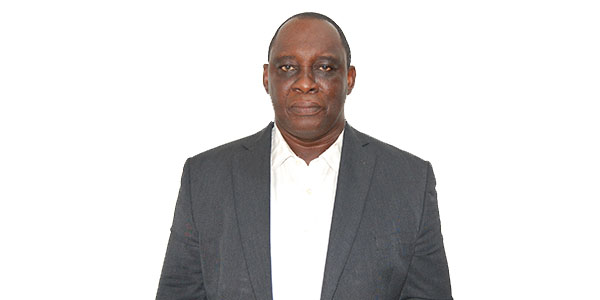- set up your team for a fruitful and engaging experience improvement workshop
How do you ensure that customers experience a unique array of services from your touchpoints? Your empathy with the customer evolves as you leverage your internal mechanisms to help you clearly understand their needs and respond appropriately to them by matching outside-in thinking with the inside-out processes of the company. Not paying attention to this mindset is akin to wishful thinking.
Getting your experience agenda right will require first of all that you pursue the quest to identify a prioritized list of improvement opportunities. This has to be done painstakingly but trust me it is worth the effort. You must also understand that it is not process re-engineering or any of the well-known processes such as Six Sigma or Lean process. Consider the architect who conceptualizes a design and goes on to think through it meticulously and then begins the process of crystallizing it on paper until ….. alas a beautiful piece to behold.
Try this airport scenario. You travel to a far-away country arriving at the airport as a total stranger finding your way through a melee of people and activities. That alone can be very daunting. If the airport authorities can make life a little easier imagine the relief when help arrives just when you need it. Years ago I traveled with a group to Singapore for a training programme. We arrived in Singapore on a Sunday nobody was expecting us on that day.
This was a busy airport what were we going to do? We suddenly noticed information desks located at points in the arrival hall so we approached one of them. We told the lady our mission and explained that we were expecting someone to meet us but disappointingly this did not happen. So the smart lady asked which Ministry was hosting us. We said the Foreign ministry. She asked us to give her a few minutes while she made some calls so we wandered around a bit. A few minutes later she called us and got us to speak to a Security Officer at the Ministry.
Well, he didn’t know about us but knew who to call and so he did and guess our relief when everything was settled in minutes after that we were soon comfortably resting in our hotel. Going through the process of designing a good customer experience will prepare your business adequately for a fruitful relationship with the customer. According to Pennington, A (2016), A few of the things we must put in place as we start the design journey are preparation (encompassing design preparation and developing the design team), The Experience Improvement Workshop, the group design brief, feeding back, the outputs, and planning how inside-out meets outside-in.
Preparing to Design
The purpose of this process is to collate inputs, run your experience improvement workshop, validate the output with customers and refine the ideas, and engage with the internal processes to ensure that the changes can be deployed. It’s about convergent thinking, involves putting together a range of materials, and creating further inputs for an experience improvement workshop.
The proposed design synopsis for this process includes: what the opportunity is e.g. the scale, the competitive advantage created. Where you are today e.g. a summary of the drivers for change. Other factors to consider e.g. metrics, data/technology. The design session plan e.g. who is needed and for how long? What timelines? To ensure that the workshop will be beneficial consider what the business case is (benefits).
Some of the inputs to put together include a team brief i.e. a group of documents detailing the experience if it exists. Therefore taking the airport example a possible scenario could be what happens when a visitor is lost and needs help to find an organization or individual meant to host this individual. You then create your persona, this is a fictional representation of your brand’s typical customer. It’s the description of a real person, which means they are given a name, a career, motivations, goals, and problems.
Developing the design team
This team would be some 20 – 30 people selected from across the organization, from different departments and functions. They are selected cross-functionally for obvious reasons. It is to ensure that the mindset of being customer-centric is a shared value across the organization. People selected for the team must be ones from different levels, worthy of recognition, and willing to contribute to a group environment.
Experts advise that before running the workshop participants are allowed to mystery shop to encounter their personal experiences to share during the workshop. So if say I am selected for the experience workshop I get a formal letter announcing this and advising that I undertake a mystery shop errand with my expectations of what the ideal experience should be. In addition to this ask participants to share their thoughts on experience encounters and note these down to be shared during the workshop.
The idea is to give the team an experience and get them engaged during the workshop for maximum effect. Before the start of the workshop ask the team to send in their thoughts and findings. Which will be input for you (the facilitator) to create a digest for discussion at the workshop. The workshop will be a two-day affair, participants should dress casually for the event. To give them a team experience arrange with the hotel to give them, one good experience and a bad one for each participant. During the session, you can ask participants what they think of the hotel experience.
The Experience Improvement Workshop
The workshop will be a mix of sessions with the whole group, and break-out sessions where teams of six or so will engage each other to have more focused discussions. It will be helpful to mix up the groups to provide different viewpoints. Also be flexible in determining the mix of groups, if something doesn’t work right feel free to turn things around until you land with the right dynamics for the engagement.
Ensure that the workshop environment is fun and stimulating, use videos to highlight wow experiences. Provide sweets as props for people to use. Start the session by asking for early thoughts and ideas on the interactions you are designing. Ask some key questions such as ‘what could we do for free or if we had GHS 5000 what would we spend it on to improve the experience? Use sticky notes on the wall to capture ideas. When these ideas are thrown up the smaller groups will meet to discuss them in more depth.
Use all the resources you can muster to help you address issues in great detail. When you break into groups if you have a different persona ask the teams to be in the mindset of the persona. If there aren’t many of these you can ask the team to at different stages or have them all work on the same interactions. The goal is to develop materials that will be input for the development of a group design brief. Let each day start by asking the team to collate ideas on a sticky note to be placed on the wall. It will be a great 2/3 days of thinking and brainstorming.
The group design brief
Your goal is to design an experience that aligns with your persona’s aspirations of a great experience. You want an experience that builds on your varied and collective work and experience to date, one that is not constrained by anything and brings to life your experience and design brief. To make the brief an accepted document that guides your experience agenda there are a few tips that you must consider.
Create a design for the experience. This will be a mini ideal state Customer Journey Map (CJM) that records what’s happening in key moments. These redesigned interactions will address the pain points you have gathered from the sessions. Generate new ideas to challenge existing practice to assess what needs to improve. Note that customer experience weighs heavily on the emotions of your persona therefore you have to dig further into how the 5 senses play out in encounters.
Ensure that you check how well the design ideas from your workshop incorporate the messages you have identified that the customer needs to hear and understand. Take lots of photographs of the event, and record simple interviews with participants talking about their ideas and the sessions. This allows you to bring things to life when present to others later. Allow for a feedback session where ideas are shared commonly and participants get to choose which ones they love (using the love sign for example) and would like to STEAL.
The outputs
The customer experience team will take the outputs from the workshop and consolidate them into a report on opportunities and ideas. These may include narratives that draw on the individual group work and describe in words the new customer experience using visuals to illustrate them. Pennington suggests that you break the opportunities into immediate ‘just to do it and a proposed hierarchy that highlights ease and impacts analysis.
You may need external validation to ensure that your outputs duly align with good practice. The clarion call today is for us to under promise and over deliver other than the converse. Getting it right means that what you achieve from the workshops will address customer sentiments aptly. Therefore to ensure that you have got this under control use the mechanisms at your disposal to gain buy-in such as focus groups with customers to take them through the key ideas.
Planning how inside-out meets outside-in
When you have completed the process with an approved set of ideas for your new experience you now enter into the final stage before deployment by engaging with the inside-out business process. This is time to ask the question ‘what do we need to do to make this happen?’ this is where you plan and assemble the right internal resources based on the needs of the design.
At this point, you also face the risk of diluting the experience as this includes major processes such as data, technology, and legal. There could even be threats from the organizational culture where the new experience may seem to clash with the as-is situation. This is where the CX leader needs to employ the right strategies to engage with stakeholders so that outcomes are laid out with compromises only where it makes overwhelming commercial sense. Even where you compromise look for alternative ways to deliver the same customer outcome in experience terms as the driver.
The key is that as a business you do not want your experience delivery to be an accident. Although there is room for an incremental change it is important to get the balance right. Avoid the response to the question ‘why do you do that?’ which says because we have always done it this way.
 |
The Writer is a Management Consultant (Change and Customer Experience). He can be reached on 059 175 7205, [email protected], https://www.linkedin.com/Kodwo Manuel |










